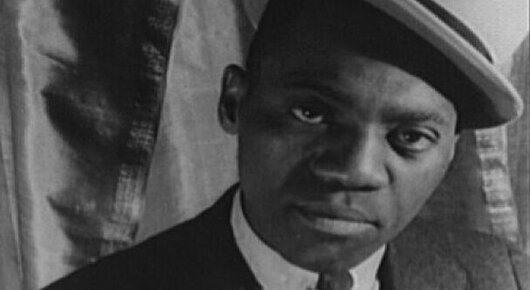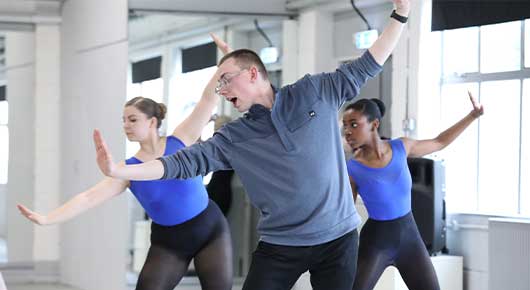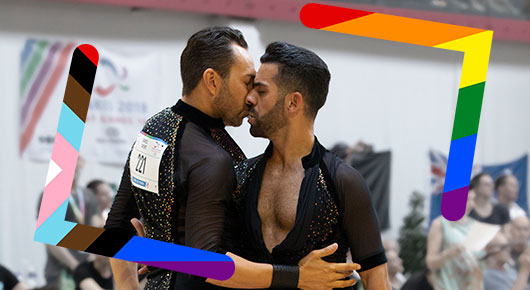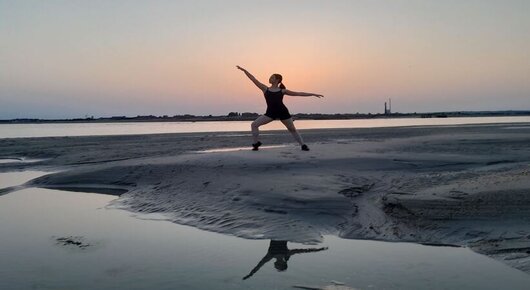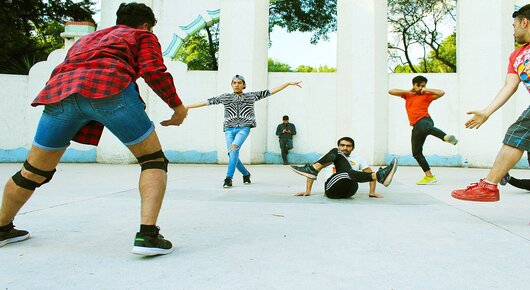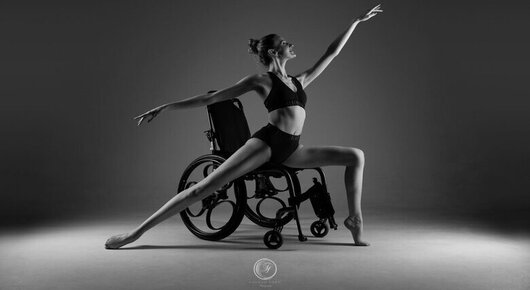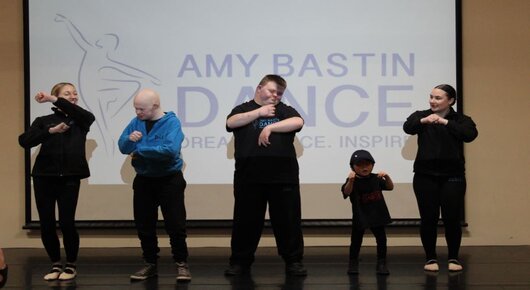8 March 2021
Ballet Black is a professional company for international ballet dancers of black and Asian descent, which aims to bring ballet to a more culturally diverse audience.
Born in London of Trinidadian and British parents, Cassa enjoyed regular ballet classes, and showed obvious talent, going on to train at the Royal Academy of Dance. “My parents took me to my first ballet class at the age two and a half,” says Cassa “you know, like most people I started just doing one class a week, then two, then three, then four, until I was doing about seven classes a week.”
In her late teens, Cassa suffered a back injury that took two years to recover from, but this set-back did not deter her from later graduating with an honours degree in The Art and Teaching of Classical Ballet from Durham University in 2001. “I think it’s just a typical dancer thing isn’t it, that you just are very determined and you keep going,” says Cassa.
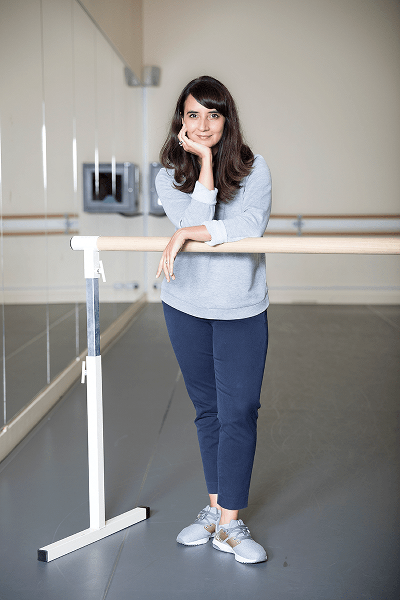
Cassa Pancho by Photographer Holly McGlynn
When Ballet Black was founded in 2001, no black women were performing in any of the UK’s ballet companies, a fact Cassa identified when completing All things Black and Beautiful, the dissertation she wrote for her degree. She came to the conclusion that matters needed to be taken in hand, and had a clear idea of how it could be achieved. She explains: “I had the idea to start at least a ballet class where the teacher was black, to change the makeup of the person in charge of the room and to see what effect that has on the people who attend the class.”
Cassa was only 21 when she founded the company. She says: “It was just complete ignorance that gave me the confidence to do it because I didn’t know any better. Along the way I learned a lot of really useful things and some random things, from how to set the perfect curtain call and make sure that is rehearsed really well, to setting up a limited company, file accounts and structure a day so that you can rehearse both contemporary work and ballet based work in the same day without destroying your dancer’s body – loads of things like that, which was a massive learning curve.”
In 2004 Ballet Black achieved registered charity status. Cassa takes a very practical approach to her work: “Each time something came up, I just needed to figure out how to do it to make the next thing happen. We needed to get donations from people for example but we couldn’t get donations unless we were a charity. So then it was setting about figuring out how you do that. It enabled us to get donations, and the donations allowed us to put on another show, so it was much more of a situation where you just dealt with each issue or problem as it came up rather than having a big determination across the board to make everything work. Sometimes I didn’t even know about something till someone told me, like music rights. We did a show and then someone wrote to us saying they were really happy that we loved their music enough to use it in a ballet but we hadn’t asked them if we could use it, and we needed to pay them some money. Luckily they were very nice about it, as were a lot of people in the early days. They were very generous with their time and their advice, so it’s just stuff you learn as you go along.”
Cassa, who runs a Junior School in Shepherd’s Bush, West London with classes for 3 to 18 year olds and offers non-syllabus and examination classes, comments: “I think we need more teachers who are of black descent first of all because I think that gives families and parents reassurance when they’re sending their child to ballet class. Especially if you’re trying to send a three or four year old into a class, you don’t want them to feel isolated in any way, so you really want to see a good mix of different people in the student body or ideally someone leading the class who looks representative of something other than white.
“But you can’t get that until you have dancers finish their professional careers and go through training courses. We need to encourage the younger children, particularly girls, into ballet early so that they can get everything they need to get ready to go into a professional school. At the same time any dancers who have an interest in teaching beyond their dance careers need to be encouraged and supported to take that training. So it’s about setting people up after they have retired as dancers, and not just as teachers, but also as rehearsal directors, choreographers, or artistic directors – whatever takes people’s interest. But allowing some support there to let them make those choices and have a new skill after they have been a dancer.”
Cassa says the ultimate goal is to see a fundamental change in the number of black and Asian dancers in mainstream ballet companies, eventually making the vision of Ballet Black wonderfully unnecessary. When asked how effective Ballet Black has been to date, she says: "I hope that at the very least we’ve provoked conversation about it. In the early days, a lot of people would say they didn’t understand why we need a Ballet Black. What’s the point and what’s the purpose? But, when you asked them how many black women are in UK ballet companies they couldn’t come up with an answer. It really made people have to think about it, whereas before they may not have considered it at all. So I hope that at the very least by provoking the discussion, we’ve had an impact.”
On receiving her MBE in the 2013 New Years Honours list for services to ballet, Cassa comments: “Receiving an award hadn’t ever crossed my mind in any way, shape or form. When you get there on the day, you meet the other people who are receiving awards for world-changing things like advances in the cure for HIV or cancer. I was the only dance person there and I felt a bit silly saying I’m here for ballet, even though all the other people were really generous and thought that I was equally worthy, it made me really wonder. But in the queue to go in to receive the MBE, I got talking to a lady who had tickets for Ballet Black the next day. I had never met her before, and I thought it was really interesting because I would never have expected either to get the award or to meet someone there who knew what Ballet Black was.”
Along with Senior Artist Cira Robinson, Cassa has recently collaborated with renowned British ballet shoe manufacturer, Freed of London, to create two brand new pointe shoe colours to enable black and Asian dancers to buy skin-tone pointe shoes ready-made. Cassa explains: “As you know, they can make you a shoe in almost any colour. Cira saw the different colour swatches on the counter but she couldn’t see anything brown, and she asked if they had something in a colour that she could wear. At first they advised us to go and find some satin that would match Cira’s colour but we quickly realised that we really needed Freed to do that part of the work because they’re the experts. So, we spoke again and they had, at that point, been in touch with Luke Jennings, who had written an article for the Dancing Times about the lack of brown tights and shoes for dancers available. They had approached him about the article, and he advised them to speak with Ballet Black because we also wanted to make brown shoes and it might be an idea to work together. So we went through a lengthy process of finding the right shade of satin and then the right quality to stand up to the rigours of classical ballet like the original pink.
“Once we had found the darker brown we decided to make a medium shade too, which is the Ballet Bronze. There was some back and forth, like when there would still be pink strings on the shoe, so we would ask for the whole thing to be brown, ribbons, mesh and string, so that the dancer doesn’t have to do any pancaking whatsoever. That led to the shoes we have now.
“What we had always done was use foundation matching the dancer’s skin colour, painting on two or three coats using a makeup sponge, plus the ribbons, plus everything else, like mesh or elastic. You’ve got to let it dry, and then you do your next coat, then let that dry. Sometimes there isn’t time to let it dry, so you wear the shoes out on stage and this little brown dot falls over the floor or on your partner’s costume. So the new shoe colours eliminate all of that nonsense, which is brilliant. Having the correct colour shoes saves them wearing down from adding makeup in the first place. Because, the last thing you want to do is put anything damp on a shoe, so that means that the life of the shoe is longer for us as well.
“Rishan Benjamin, a black ballet artist with Scottish ballet sent me a photograph of their shoe room and she’s got her Ballet Brown pointe shoes in there. She was so happy to get the correct colour shoes. There’s something about being able to go into the store and get shoes in your own colour. There’s a poster of three of our dancers wearing the pink, the bronze and the brown in the window of Freed, and I think there’s a feeling of acceptance in the wider world of ballet that people didn’t necessarily feel before. We’ve had emails and social media messages from parents saying it’s just amazing to walk in and get their daughter the shoe type and the colour that matches the rest of her body.
“My overarching feeling is that at long last we can just go and buy what we need to buy. We’re so used to just doing the normal thing in the ballet world I think. Getting your shoes, pancaking them, getting them ready for a show. So, that’s where I feel that Ballet Black has had a visible impact on the dance world. It finally feels like equality to me because it means that dancers are just breaking in their new shoes, like any dancer in any other company would be able to do, which is different from preparing shoes to look right.”
Ballet Black commissions choreographers like Richard Alston, Shobana Jeyasingh and Liam Scarlett, giving the company a reputation for bold programming. Ballet Black also has a reputation for attracting a more diverse audience. Cassa explains: “It was just a very simple idea that if your cast is diverse then your audience will be diverse, which is true, because I’ve seen it.”
Cassa explains that when she looks out and sees these diverse audiences she feels vindicated: “Right at the beginning when I started Ballet Black a lot of people said that there’s no point in doing this because black people don’t like ballet or have no interest in going to the theatre. It just proves that is nonsense. It doesn’t matter what colour you are, you can love ballet, or the theatre.”
However, it seems the work of Ballet Black is far from done, as Cassa explains: “We need to allow the current crop of excellent black dancers in the UK a chance to have their dance careers and then graduate into something else. That will start to change the overall look of ballet because those people will become the next artistic directors, or choreographers, or gatekeepers in some form. Then seeing the world through their eyes they will change the next wave of ballet.”
Ballet Black is a smaller company and so doesn’t perform the big ballets classics. Cassa has no plans to change this: “I don’t want to repeat what other people are doing. We’re in the same city as The Royal Ballet and English National Ballet. There’s absolutely no need for another company to be doing Swan Lake and Giselle. We would like to go a little bit bigger to 10 dancers, but we want to stay quite streamlined so that we can go anywhere, do a festival, or the Barbican, or a tiny theatre, or the opera house, and we can scale up or down. Any bigger than that and I think it would become a bit cumbersome in terms of taking it out on tour and being able to reach smaller places. We’re still quite unique in that sense.
“If we had the responsibility of making sure we did 28 Nutcracker shows in December, and each one had to sell out, that would change the whole model of Ballet Black. Whereas now we can really take risks, experiment, commission all sorts of work from all different kinds of people and I think people really enjoy that. They don’t know what they’re going to get when they come to a Ballet Black show.”
When asked how she gained the moniker ‘boss lady’, Cassa replied: “Our founding ballet master, Denzil Bailey, who used to dance for the English National Ballet, just started calling me that one day, and it just sort of stuck.”
Ballet Black’s latest tour, a triple bill of performances, received a positive critical reaction, with The Guardian describing the dancers’ personalities as “seeping out at the edges”. Cassa explains that it is very important to her that company members retain their individuality and personalities: “Again, it lends a completely different facet to ballet. You know, we’re used to seeing everyone the same height and size and doing the same movements. What sets us apart is that you can really connect with individual dancers. A lot of people have their favourite and it’s not always the same person, they’re all so different. You can connect with them all in different ways. I think that’s really important to making exciting work, and being an interesting company. And it’s also interesting for them as artists. They don’t have to conform to one way of doing things.”
When asked what opportunities there will be to see Ballet Black over the coming months, Cassa replied: “We will be continuing our tour throughout the autumn and then we are also going on tour with Birmingham Royal Ballet. We’re performing our piece The Suit and we’re joining them as part of their triple bill. So they will be doing two pieces, and we will be doing one. And that’s really exciting for us because we will be performing at Sadler’s Wells and the Birmingham Hippodrome, which we haven’t done before. In the near future have a new dancer, a graduate from Central School of Ballet joining us and we will be going to Europe as well.”
When asked what was the best piece of advice she received as a young dancer, Cassa replied: “That people don’t really know what they’re doing. It looks like they do, but no one knows what they’re doing.” And when asked what is the one piece of advice she would give to a young dancer, she said: “Take what you’re doing seriously, but not yourself.”
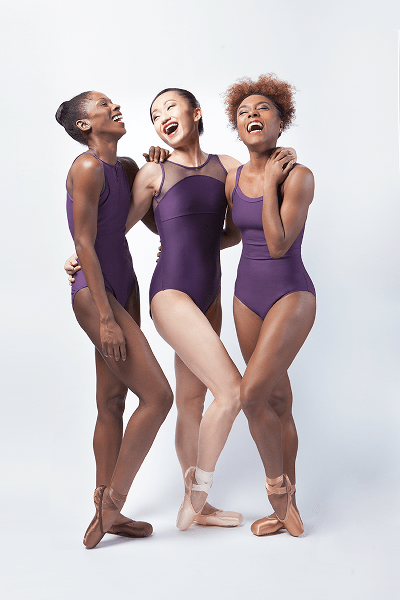
Photographer: Tyrone Singleton and Dancers: Cira Robinson, Sayaka Ichikawa & Marie Astrid Mence from Ballet Black Costume Designer: Jean-Marc Puissant
This article was originally published in Dance Magazine Issue #487. To stay informed with the latest news and views from the Society, best practice in teaching, and inspirational stories from our alumni, subscribe to Dance magazine today.
